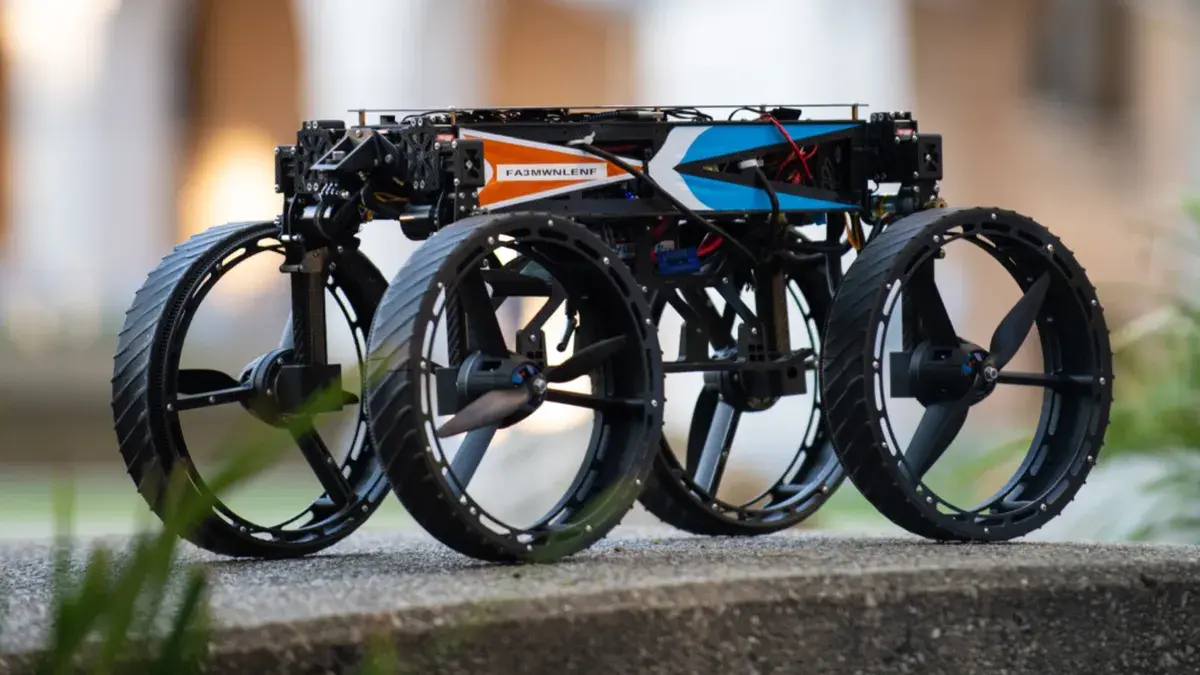Scientists have developed a new robot called the Multi-Modal Mobility Morphobot, or M4 for short. Animals inspire this robot and can move in various ways by using its different components. It weighs 6 kilograms and is 70 centimetres long, with a height and width of 35 centimetres.

M4 has four legs, each with two joints and fans at the ends. These fans can be used as legs, propellers, or wheels, allowing the robot to adapt to different terrains. It can walk over rough surfaces, climb steep slopes, and even tumble over large obstacles. M4 can also fly and crawl to navigate through low-ceiling areas.
The robot’s design is influenced by animals like birds, meerkats, and seals, which can repurpose their limbs to move in different environments. By mimicking this adaptability, M4 can tackle a wide range of challenges.
M4 has onboard computers and sensors that enable it to operate autonomously. It can analyze its surroundings and choose the appropriate mode of movement to navigate through unstructured environments.
This robot has great potential in various applications. It could be used in search and rescue missions after natural disasters, space exploration missions, and automated package delivery systems. Its ability to traverse different terrains and adapt to changing situations makes it a valuable tool in complex environments.
The development of robots like M4 opens up new possibilities for exploration and problem-solving. By learning from nature and incorporating versatile capabilities into robot designs, we can overcome obstacles that were once considered insurmountable. The study detailing M4’s capabilities was published in the journal Nature Communications on June 27.
Leave a Reply